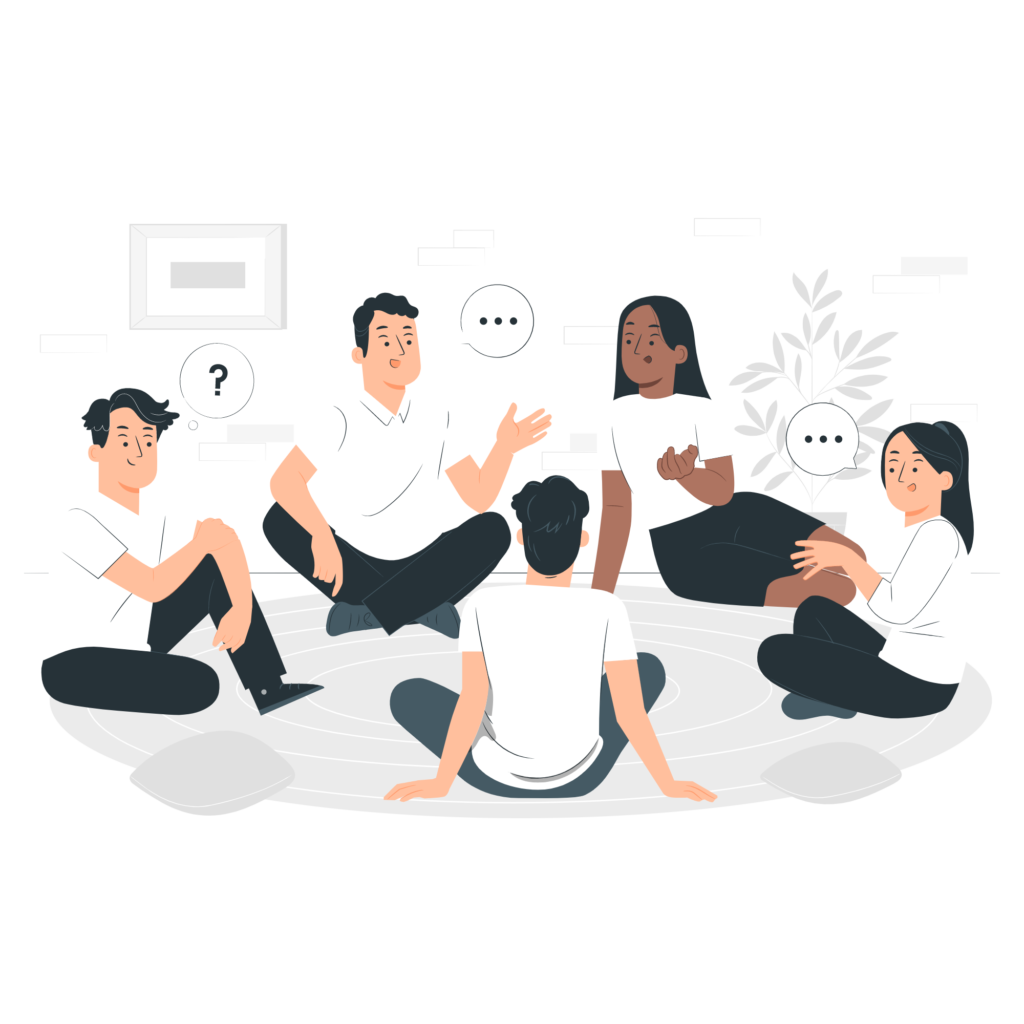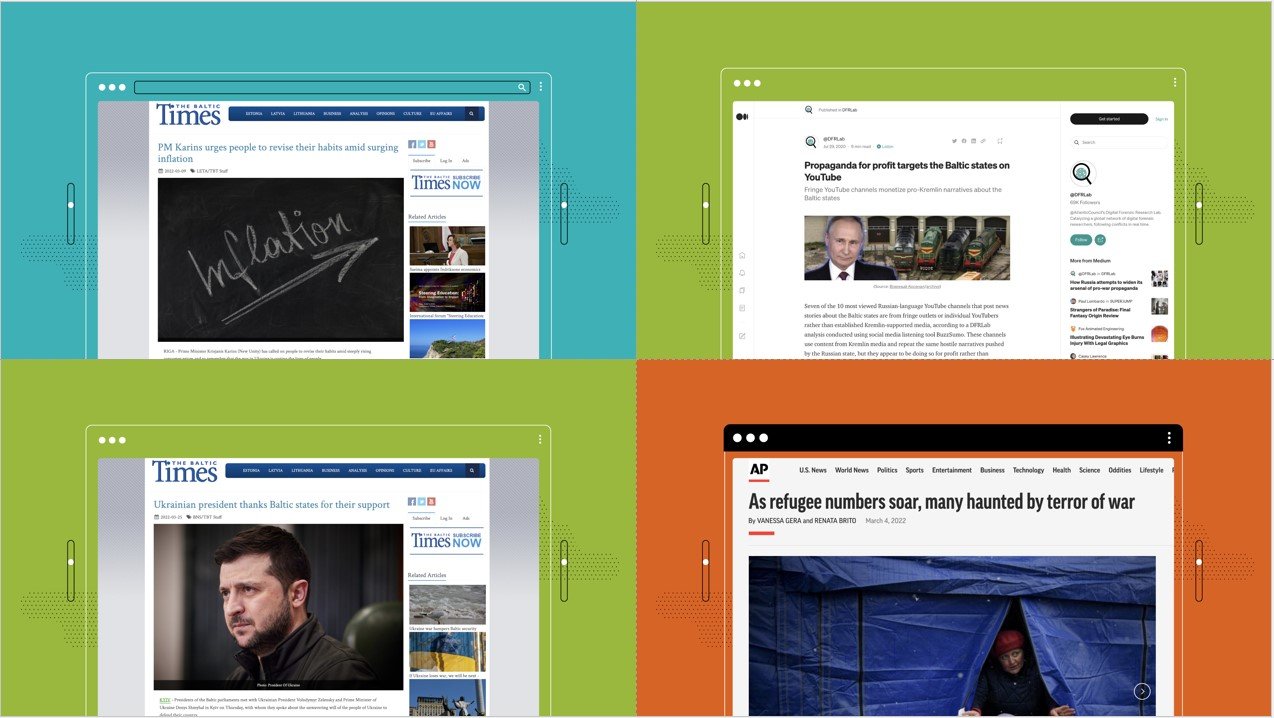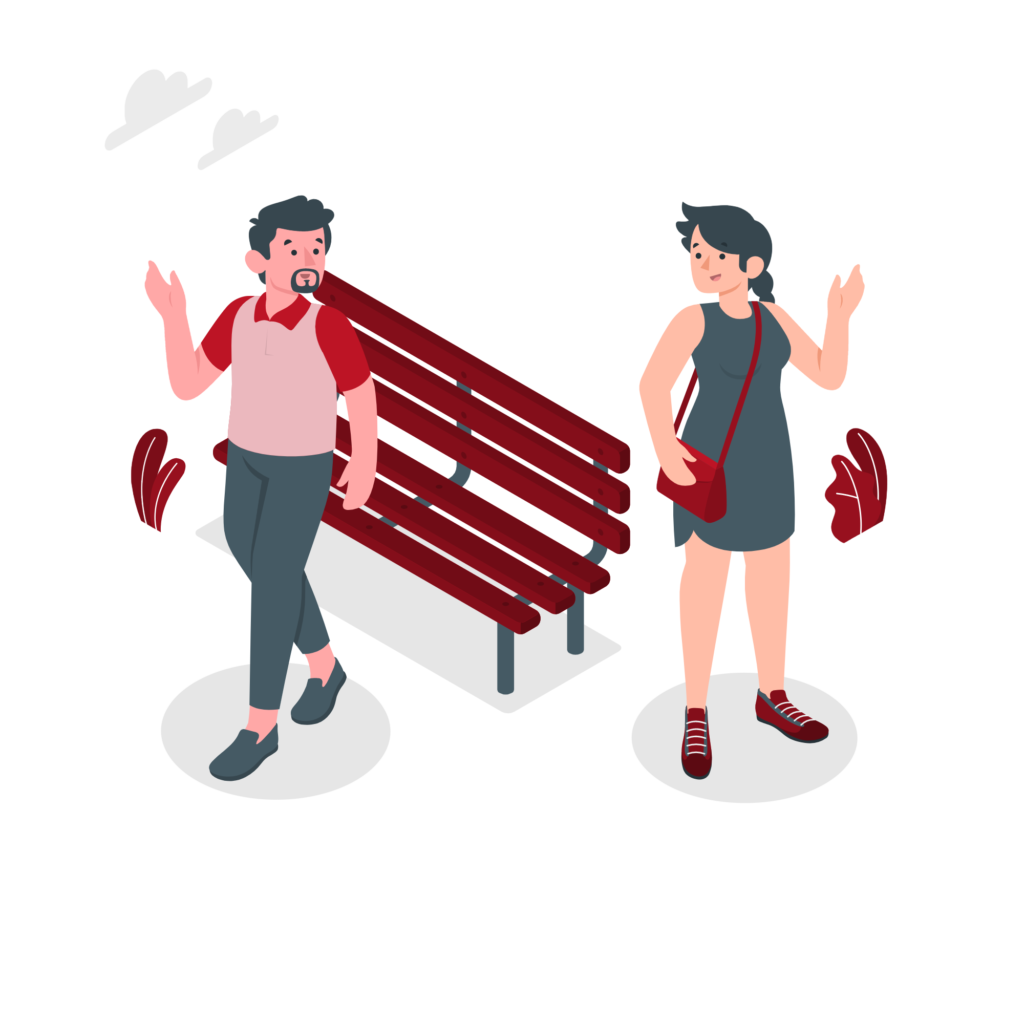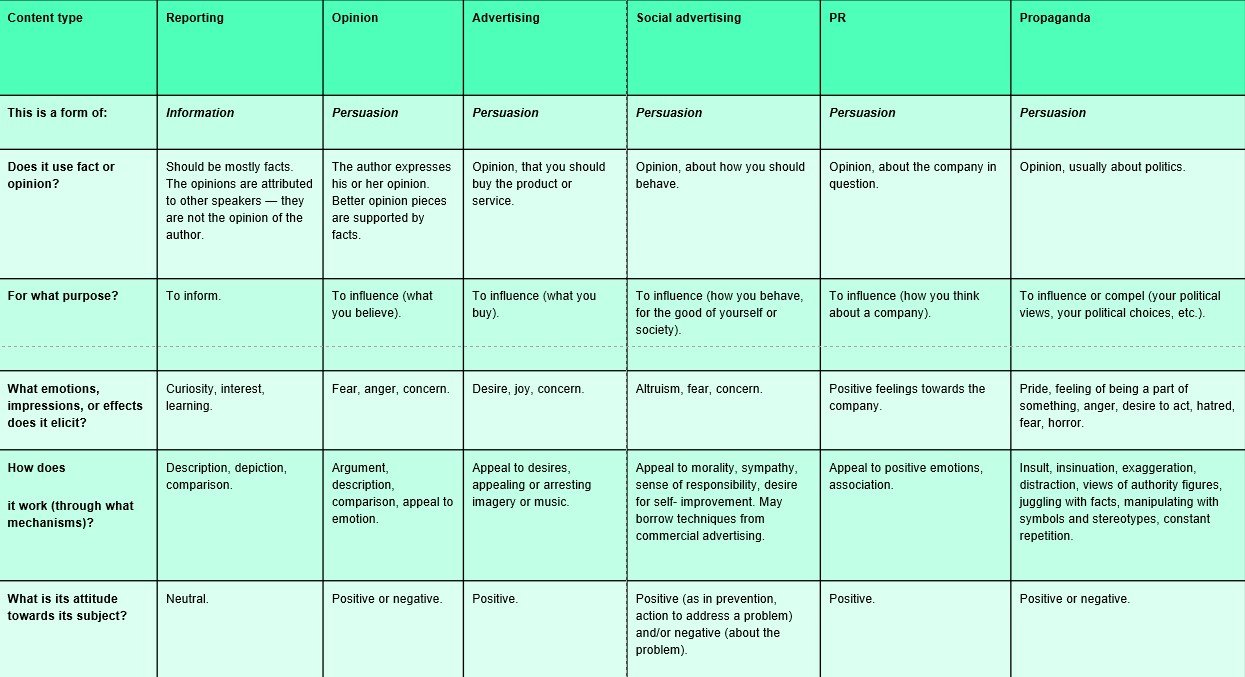Adopt a critical approach regarding information
Training Kits
What is information?
Explore the concept of information, its significance, and its various forms.

Module Description
This module was created to help participants understand the meaning of information, evaluate the information flows in their daily life and equip participants with skills that can be used to recognize disinformation and propaganda. Training aims to equip participants with the knowledge, skills and tools to judge the veracity of the content they read and to independently draw accurate conclusions about outlets’ reliability.
Target group
Adults and youngsters in formal and non-formal training settings
Evaluation method
Reflection and
Practical activities
Materials
▶ Paper and pens, Tape, Highlighters, Markers
▶ Handout – Feelings wheel: https://legacy.camosun.ca/covid19/documents/camhelps/9-Feelings-Wheel-Handout-2019.pdf
▶ Computer and screen for showing video examples
Training Objectives - LOM
Recognize how the media evokes emotional reactions from the consumers
Understand the difference between information and persuasion
Recognize different types of media content and different ways of conveying information, such as informing, propaganda, social advertising, public relations, and commercial advertising
Understand our vulnerability to information and Identify their own media consumption habits
Learn to think critically about the changes that have taken place in the information ecosystem in the past 20 years
Be better able to determine the credibility of different types of media
Concepts & Definitions
Information
Data that has been processed in such a way as to be meaningful to the person who receives it. it is anything that is communicated
Media
All types of mass communication (internet, broadcast, publishing), regarded collectively
Media literacy
A skill set that promotes critical engagement with messages produced by the media
Misinformation
Incorrect or misleading information
Disinformation
Information that is false and deliberately created to harm a person, social group, organisation or country
Mal-information
Information that is false and deliberately created to harm a person, social group, organisation or country
Activity 1
UNDERSTANDING INFORMATION & MEDIA
Warm up
Arrange chairs in a circle, if possible. Ask each participant to introduce themselves, giving:
- Their name.
- A bit about themselves — whatever they’d like to share about their hometown, profession, children, hobbies, etc.
- Why they joined the course.
- Something that no one else in the room knows about them. The last question should be fun; it will inevitably produce answers that people remember (e.g., “I went skydiving last week” or “I speak Esperanto”).
Give an example by introducing yourself and answering these four questions.

Activity 1
UNDERSTANDING INFORMATION & MEDIA

Introduction – 5 min
It is important today to be a literate consumer of information. Media literacy is the ability to work with information, navigate various types of media content and the ability to understand the goals set by the creators of information materials. Now we are surrounded by a huge amount of information, which is sometimes incorrect or deliberately distorted. The ability to assess the credibility of media content and sources of information is becoming increasingly important. Therefore, everyone needs to be able to distinguish false news and manipulated material from the truth. This is a big part of what is commonly referred to as media literacy. First step in this process is to understand what information is and how it influences our emotions.
What is information – 20 min
Participants watch the video below, then take part in a discussion.

Element for the discussion:
Information is data that has been processed in such a way as to be meaningful to the person who receives it. it is anything that is communicated.
It’s very hard to correct misinformation. We saw that misinformation often gets more traction than the corrective information that comes after. This means it’s all the more important for us to carefully judge what we read and view, and avoid sharing something if it might be misinformation. It’s important to realise that all of us are working against our natural instincts when we try to disengage from sensational information. Sensationalism works because human beings are drawn to it. That is why false stories travel faster than true ones. False, sensational stories work because they touch upon something we value and at the same time, create fear. Fear turns off our ability to think critically. This is why it is important to coach yourself to recognize these emotions when they are triggered.
My information consumption– 30 min
Exercise – 20 min
Ask participants: What kind of information do you use and from which channels? ( filling in what media they consume regularly –email, twitter, radio, tv shows, etc., and what content they consume on each platform. For example, they might watch a morning show in the morning, listen to a podcast on the way to work on the bus, and check Facebook at lunch on a work computer. Tell everyone to list as much as possible and whatever comes to mind.
After, ask people to jot down any trends they notice in their habits, or whether anything surprised them.
Then, on a blank piece of paper, have everyone list the technology devices they use regularly (phones, computers, tablets, TV…).
Now have everyone place the two sheets of paper side by side, tape them together, and draw lines from devices (such as phones, computers) to the types of media they consume (such as podcasts, news articles) to create a web. This can help people illustrate that they consume news on TV, they listen to podcasts on their phone, etc.
Finally, have everyone highlight colour devices that they use simultaneously — texting while watching TV, etc.

Process questions – 10 minutes
How do you feel seeing this list? How do you feel about the media and tech you use?
Does this seem like a lot of information coming at you? How does that affect your ability to discern the quality of information?
Name It to Tame It - 5 min
News and media can make us feel a certain way. For example, we can be surprised, angry, confused, or sad. Taking a minute to identify your emotional reaction, and to take a pause (and a bit of distance) from it can help you better understand the news and media you are seeing, better understand your own views towards a topic, and help you avoid falling for content that might not be true.
We call this principle “Name It to Tame It” (borrowing a phrase from Dr. Dan Siegel, researcher on interpersonal neurobiology). The act of finding words to describe your emotions turns on the part of your brain that gives you mental control and the ability to regulate yourself (the “executive brain”). This gives you the ability to choose how you respond to the thing that provoked the reaction. Pausing, taming your reaction, and activating the executive brain will help you determine the truth of the information, or at least help stop you from sharing something that you are not sure is true.

Exercise 25 min
Take a look at the below images and read the headlines:
1.Pause: Turn your head away from the screen or paper.
2.Ask: What am I feeling?
3.Say: The name of the feeling to yourself.
4.Write down your feelings.
After activity discussion.

Click to view
Acknowledge that it may be hard to put a label on an emotion, and it may feel uncomfortable.
If participants are having trouble naming the feeling, suggest they look at the Wheel of Emotions handout for ideas. Give them time to digest and process.
Ask: which of the headlines make you want to share the news with others? Why?
Alternative for this entire exercise: Use a Think-Pair-Share approach. Divide the participants into pairs (you may want to pair men with women and vice versa). For each slide, have the participants first go through the Name It To Tame It steps on their own, then share their feelings with their partners.
CLOSURE – 10 min
We are bombarded with information and it can be difficult to tell the truth from fiction. To be more critical consumers of news and media, it can be helpful to recognize and understand your own emotional reactions to various topics covered in the news. Using Name It to Tame It — observing and setting aside your strong emotional reactions — can help you be a more critical and self-aware consumer of news and media. After that, it’s critical to be careful about whether we share the information we come across. Keep in mind that you are the information gatekeepers, and false information travels faster and further than corrections. Therefore, take steps to think critically before you share information.
Reflection:
Finish the sentence:
It was difficult …..
I learned ….
It was interesting to know that…..
I was surprised when….
Now I want to…
Activity 2
CHANGES IN INFORMATION ECOSYSTEM
Warm up – 10 min
Dividing participants into groups, give participants sticky notes with the various technologies written on them (writing on clay
tablets, papyrus, etc.).
Their job is to place the innovations along the timeline. This will show the great pace of acceleration of communications technology. They can add other information-related innovations that may occur to them.

Writing on clay tablets Papyrus, Hand-written books Printing press, Postal service Newspapers Telegraph Telephone Film, Radio, Amateur (Ham) Radio TV, Cable, Internet, Email, Google, Facebook, YouTube, Twitter Smartphones Whatsapp Electronic tablets, Instagram Snapchat, Virtual Reality Journalism
Click to view
ANSWERS: 3000 BC, 2400 BC, 1st century AD 1430s, 6th century BC 1600s, 1830s, 1870s, 1880s, 1900s, Early 20th century 1920s, 1940s, 1960s, 1970s 1998 200, 2005 2006 2007 2009 2010 2010 2011 circa 2015
Exercise – 5 min
Today, anyone can publish. In some ways, we can all be journalists. You can record something happening near you and publish it for your friends and neighbours. It might even go viral, nationwide or worldwide. But the quality of information published online varies tremendously. Most of us don’t have the time to verify information and report on context the way that journalists do and most people who share information online have not committed to follow the journalistic standards we discussed above.
Exists different kinds of misinformation that you can find in the media. There’s a lot of ways that people try to distort the truth or even spread wholesale falsehoods. Content can come in a variety of forms: There’s disinformation, which is intended to deceive, and misinformation, that’s not — it is most often the result of editorial mistakes or poor journalistic work.
Learning what kinds of manipulation are out there can help you to detect misinformation and keep from spreading it.

Process questions 5 min.
Discuss the above examples. Why do you think people create dis- and mis-information and distort the truth? What do they have to gain?
WHICH IS WHICH - 20 min
Divide participants into small groups. Each group should read the articles and decide which form of information disorder it is.
1. Shortly before election day in France in 2017, Emmanuel Macron’s emails were leaked on the anonymous document-sharing site Pastebin. It was hours before the pre-election news blackout, which in France prohibits media from quoting election candidates or their supporters until the polls close. Most journalists treated the correspondence with caution, but bots, political opponents, and the official Twitter page of WikiLeaks started spreading the information through social media.
This is an example of: Misinformation; Malinformation; Disinformation
2. Two political activists in Latvia were publicly posting calls to recruit people who could help them set up fake social media profiles. The activists posted their messages independently from one another, but both are known for their involvement in anti-government movements and spreading Covid-19-related conspiracy theories. In their posts, one of them described their activities as “information war” but the other called it a “troll farm.”
This is an example of: Misinformation; Malinformation; Disinformation
3. Several media outlets around the world, including in the Baltic states, reported early in the pandemic that the World Health Organization (WHO) does not recommend taking ibuprofen if you have fallen ill with Covid-19 due to health concerns. The news stories were written after a press conference where a spokesperson reportedly said that the WHO recommends taking another type of pain relief mediation instead: paracetamol. The organisation later recalled this statement citing a lack of evidence. However, the wrong recommendation was already circulating on both traditional and social media.
This is an example of: Misinformation; Malinformation; Disinformation
Headlines – 25 min
The purpose of a headline is to grab your attention and make you click on the link, buy the newspaper, or read the story. Sometimes the intent to get your attention might be strong enough for an outlet to decide that an exaggerated headline is a worthy tradeoff. Manipulated photos and videos are also sometimes used to amplify the emotional impact. Learn to recognize sensationalist headlines and the ways pictures can be distorted.
1. Clickbait. Language that encourages you to read or share something online, often by leaving questions unanswered
2. False connection, part 1: News articles, in print and online, might feature a headline that doesn’t completely represent the actual article content
3. False connection, part. 2: TV headlines might be misleading or only highlight part of a more complex issue.
4. Fabricated content: Both the headline and the article content are manufactured and false.
Discuss:
Why do you think these kinds of headlines attract our attention? What might we do so as to not get caught by these kinds of hooks?
Practice:
Ask participants to read articles and decide if the headline of the content describes the article.
Exercise:
Does the headline below describe the content of the article accurately?
“Austrian lawmaker tests cola for Covid and claims POSITIVE result returned shows testing is ‘worthless"
Michael Schnedlitz, a member of Austria’s National Council and the general secretary of the right-wing Freedom Party, railed against the government’s screening program and other coronavirus measures while addressing his colleagues in parliament on Thursday. During his speech, Schnedlitz administered a rapid Covid-19 test on a glass of cola, showing his colleagues after a few minutes that the sugary carbonated beverage had tested positive for the virus.
[..] Schnedlitz’s comments received widespread praise on social media, but some took issue with his testing technique. According to German’s Die Welt newspaper, the Austrian lawmaker administered the test incorrectly, skipping an important step before checking the sample for the virus.
Source: RT.com
CLOSURE - 15 min
Non-credible news and information can take many forms, including misinformation and disinformation. These types of non-credible information often differ in terms of intent, or whether or not the creator is trying to deceive, manipulate, or otherwise cause harm with their content. Being able to recognize information that might be false or manipulative in some way is a vital media literacy skill and can help you avoid falling prey to a scheme or someone’s bad actions and bad intent. Remember to Care Before You Share — you are the most important line of defence against misinformation! In a world where most of us get news, at least in part, from social media, headlines are increasingly important. But headlines across media platforms can often be misleading, manipulative, or simply inaccurate. Being aware of different types of headlines, being more wary when reading headlines, and taking time to name any emotion you have in reaction to a headline, or simply pause for a moment, can help you become a savvier consumer of news more generally.
Reflection
- What were the main things you learned today: From the teaching? From the practical activities? discussions?
- How will this be useful to you? What differences will it make for you?
- What will you do to derive maximum benefit from the workshop?
Activity 3
TYPE OF CONTENT
Warm up – 5 min
Ask participants: Where do you find health and science information? If you or someone you loved was suffering from certain symptom or a certain condition, where would you go for accurate information?
Participants will write their responses on sticky notes — as many sticky notes as they need to list out all their answers. Participants should write only one response per sticky note. Have participants place their stickies on a flip chart paper. As each person places a sticky, have him or her read out what is written on it. Any others with a similar answer should all come forward and read their answer, and group similar ideas together. Go through all of the answers.
Process questions – 10 min
Which of these would you think are reliable or not reliable?
Is Googling always the best approach for finding this information?

Introduction – 5 min
Identifying different ways of conveying information including informing, propaganda, social advertising, public relations, and commercial advertising. This is important because we have to understand the aims an information creator has before we can judge the credibility of the information.
Information presents facts that are intended to educate people on a topic or topics. It may include some opinions about the facts, but the opinions are clearly labelled, and are not the main focus of the informative piece. For all types of persuasion, the purpose is to influence. Persuasive content also tends to appeal to emotions more than Informing content does. Persuasion is a problem when its true nature is hidden. Also keep in mind that even the highest-quality opinion pieces don’t give you the whole truth. The individual facts provided may be accurate, but the author will leave out most facts that disprove his main idea. That’s why it’s important to read a variety of opinions, and to seek out purely factual pieces. Keep in mind that low-quality opinion pieces may contain information that is false!
Give participants handouts.
Exercise – 40 minutes
Divide the participants into two groups:
▶ The “reporters’” job is to inform and not persuade. The “commentators” job is to try and persuade the others of a position of their choosing.
▶ Give both groups the same fact sheet on the flu vaccine.
▶ Each group will have ten minutes to read their facts and decide how they will use the facts while fulfilling their role.
Each group selects one presenter. The group helps the presenter prepare a 4-5 minute presentation. It can be read, memorised, prompted by notes, or improvised.
- Flu is an acute viral illness. Its rapid spread could lead to a pandemic. Flu most commonly affects children, but mortality from the disease is higher among older people with chronic illnesses.
- Every year, hundreds of thousands of people are hospitalised because of the flu, and thousands die.
- Flu symptoms: sudden development of the disease, high temperature (38 ° C and above), cough, headache, sore throat and muscles, in some cases breathing problems. Diarrhoea may be one of the symptoms.
- Flu virus in the external environment remains on hard surfaces (tables, walls, door handles) from 24 to 48 hours, on materials such as clothes and paper from 8 to 12 hours, on wet surfaces up to 72 hours, on unwashed hands – up to three hours .
- The most effective method of protection is vaccination. Flu shots begin in October. The flu vaccine begins to work in healthy people in 10-14 days and protects the body for a year. If there are no contraindications, flu shots can be given to adults and children over six months old.
Process questions – 5 min
What elements made one presentation informative, and the other persuasive?
Is there anything you would have done differently if you were on the other team?
Click to view
The informative piece should have stuck to facts, and not offered any opinion. The persuasive piece could have used facts from the fact sheet — the best arguments are supported by facts — but its main point should have been to offer an opinion.
A training might include two rounds: the first reporting versus news commentary (opinion), the second reporting vs. social advertising or propaganda. Teams could be encouraged to really get creative in the second round.
Closing the activity – 10 min
In this session, participants learned the differences between information and persuasion. While reporting is a form of information, many other types of content in our environment — PR, advertising, propaganda, and so on — are intended to persuade. Participants should feel some familiarity with the markers of particular types of persuasion, as well as persuasive content in general. Information and persuasion are created with different intents: one is to inform, the other to persuade. There are other differences, but thinking about the content creator’s goal is key to distinguishing information and persuasion. Once you have that goal in mind, it’s easier to know how sceptical you should be about the content in front of you. Recognizing persuasion for what it is helps avoid being manipulated. However, we must remember that persuasion is also a valid and even necessary type of information in many cases, such as public health.
Reflection:
1.How much did you know about the subject before we started?
2. How will you use what you have learned?
Activity 4
FIGHTING MISINFORMATION
Warm up – 10 min
Have everyone get out their phones and/or computers.
Tell them to spend some time going to social media sites they typically visit, or news or media sites they visit online.
Have everyone write down some of the headlines they see.
Are they noting things like clickbait, manipulative ads, etc. that we discussed in the previous lessons?
Ask a few volunteers to share out any trends they noticed or things they are newly aware of thanks to the prior lessons on forms of manipulative media and misinformation.

Introduction 10 min
There are a number of signals we can use to determine how much we should trust a piece of written content. Here are the key steps we will take to determine the credibility of a piece of written content.
Write these on the board or poster paper.
1.Check the date.
2.Go to the source.
3.Evaluate journalistic standards.
4.Verify sources and citations.
5.Verify evidence.
Check with the fact-checkers.
Activity Fake images and headlines – 25 min
Ask participants: Look at this picture of President Donald Trump and Canadian Prime Minister Justin Trudeau. What do they think is happening in this picture? What are the alternative explanations?
Not only can we jump to the wrong conclusion about isolated photos, headlines and captions can also drastically colour the way we interpret those pictures.


Ask participants: Look at this picture of President Donald Trump and Japanese Prime Minister Shinzo Abe above a koi pond.
What conclusion do they reach based on the picture and headlines?
What really happened?
What was Abe’s reaction?
How did the selective use of the picture above distort what really happened?
Steps for reverse image search
Steps:
1.Right-click the image. (On your phone, tap the image to open it as a full-screen view.)
2.Click “Search Google for image.” (On Mobile, press your finger to the screen, hold, and choose “Search Google for this image.”)
3.Scroll down to where you see “Pages that include matching images.”
Look for the earliest date you can find (results will not be in this order, however) and also look for reputable news
outlets.
1.Save the picture you want to verify. (On your phone, press the picture on your screen and hold until you see an option to save it.)
2.In your browser, go to tineye.com.
3.Select “upload image” and choose the image you want to verify. Then, if you click on one of the images returned
in the search, you can toggle to compare it to the picture you submitted.
In the drop-down menu, choose “Oldest.”

Now ask participants to find credible information about the picture above.
Activity Fake reviews – 20 min
We often read product reviews to decide whether or not to make a purchase online. However, reviews on sites may be faked, either as a prank by people who were paid for their reviews, or by someone who works for the company trying to promote the product. We can become more savvy consumers by understanding how these fakes work.
discuss with participants how they know if the reviews are true or fake? What signals did participants look for? After discussion, share.
There are a few signs that tend to point to fake reviews:
1. First, be aware that most reviews aren’t fake. The big online retailer and review forums all have teams dedicated to ferreting out fake reviews. But they’re in an arms race with the fraudsters, so it’s a constant battle and they can’t keep all fake reviews at bay.
2. Ask yourself: Does the language sound unnatural, like it was taken from marketing material?
3. Are there non-obvious terms used in multiple reviews, as if reviewers are following a script?
4. Did the positive reviews all cluster around a small stretch of time, like just a few days?
5. Are there a lot of reviews from new accounts?
6. Are the reviews clustered mostly around 5 stars and 1 stars, with very few in the middle?
7. Play the numbers game: trust a product with lots of reviews, and only 4 out of 5 stars, over one that got 5 stars but only had a handful of reviewers. Keep in mind that people do tend to complain more than they praise, so take those negative reviews with a grain of salt.
8. And finally, be wary of using reviews to make decisions that really require better evidence. Do you want to risk taking a supplement that may have side effects because 70 people you don’t know say it worked for them?
Break participants into groups of 2 or 3. Have them look at the first set of reviews and fill in the Product Review Worksheet.


Criterion:
Is this present? Yes; Unsure; No
Unnatural language (like marketing material)?
Non-obvious terms used in multiple reviews (looks like a script)?
Positive reviews cluster around a small timespan?
Lots of reviews from new accounts?
Reviews clustered mostly around 5 and 1?
Only a few reviews overall?
Does this kind of product really need better evidence than just reviews for me to buy it? (For example, health products)
Activity close – 15 min
- Going to the source is an important precaution, because in some cases, the later report actually distorts the original information. In other cases, there’s no manipulation, but going to the source is still a good idea so you can judge how the reporter gathered the information. Going to the source is usually very quick and easy, so it should be one of the first checks you do to judge information you come across online
- When one news source cites another, it usually links to the original source. That means it’s relying on that other source for this information, and hasn’t independently verified the information. It’s always a good idea to read the most original reporting, because going to the original report means you can see what steps that journalist took to corroborate the information.
- It’s easy to misinterpret a portion of a video or photo when it’s been removed from its context. Remember that the actions and expressions in a photo aren’t always what they appear to be at first blush, and that we all interpret images in a way that fits with our preconceived notions.
- A lot of the photos you see on social media have been re-used, and sometimes in a way that changes the picture’s meaning. Pictures also get purposefully altered to spread false information. In many cases, you can use your reverse image search skills to determine if such appropriation or manipulation has taken place. Even when you don’t have time to do so, or a search yields inconclusive results, however, you’ll know to be wary, and that seeing is not necessarily believing!
- Spotting fake accounts is a fairly easy way of telling whether you should lower your trust in a particular piece of information. The answer you get might not always be definitive. But just being aware that accounts can be fake, and often created to push a certain agenda, can get you thinking more critically about content you see on social media, and that’s always a good thing.
Final consideration - CARE BEFORE YOU SHARE
1.Name It to Tame It!
2.Take responsibility. Know that YOU are the information gatekeeper. Don’t spread misinformation!
3.Acknowledge what you may not know.
4.If you have time, check it out! Do what you can to verify information.
If you’re still not sure it’s true, don’t share it.
Reflection:
How am I going to practise/implement this learning over the next month?

Case Study
In recent news that has captured global attention, reports have emerged regarding Finland’s ambitious proposal to implement a four-day workweek. The media frenzy surrounding this concept has gained significant momentum, sparking discussions and debates worldwide. The impact of these discussions was evident when an influential user took to Twitter on January 3, 2022, expressing their views on the matter. The tweet, which gained substantial traction, boldly proclaimed, “Finland introduced a 4-day workweek and 6-hour days. These old folks need to get out of POSITIONS OF power in the US.” Within a short span of time, the tweet amassed over 8,000 likes, reflecting the level of interest and support among social media users for a shorter workweek.
Information spread very fast and soon was published interview with primer minister of Finland Sanna Marin who also confirmed this news. Other official sites shared this news as well. The headline reads “Finland to introduce a four-day working week and SIX-HOUR days under plan drawn up by 34-year-old prime minister Sanna Marin.” The Daily Mail appears to have since updated their headline.
The headline reads “Finland to introduce a four-day working week and SIX-HOUR days under plan drawn up by 34-year-old prime minister Sanna Marin.” The Daily Mail appears to have since updated their headline
KEY QUESTIONS:
How we can check that it is trustworthy news?
What do we know?
What can be concluded?


